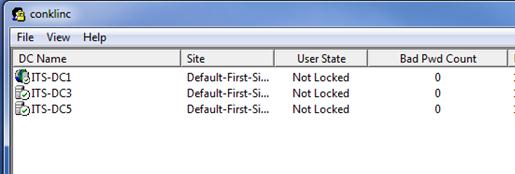

• • This tool even empowers you to automate crucial management tasks on Microsoft Active Directory. It just breaks down the complexity of these tasks and turns them into effortless 'point and click' activities. Explore all the Active Directory administrative, management and reporting features and capabilities of ADManager Plus using the of the trial version for a period of 30 days.
Download Account Lockout and Management Tool. Demystifying Active Directory User Account Lockouts with. Directory replication issues on Windows. How to find the cause of locked user account in Windows. Really love Microsoft's Account Lockout tools. Terminal Server Activation Key. 99 Names Of Muhammad Pbuh Mp3 more. Tagged windows active-directory or ask your.
Managing Active Directory Accounts Managing Active Directory accounts involves creating, modifying and deleting users, groups, computers or contacts. Unlike the native Windows Active Directory tools which need multiple steps to manage every single account or PowerShell which required an extensive Active Directory and scripting knowledge, this tool makes it ridiculously easy to manage even multiple accounts at one go through its features like. • Automate any specific Microsoft Active Directory tasks like Move users, Unlock users, delete users, disable computers, move groups, delete contacts, etc. • Automate a sequence of tasks to be performed in a specific order, at the desired time intervals. For example, you can use this option to automate the entire user lifecycle management process, that is, create user accounts, disable and move them to a different OU and finally delete these disabled users; all these tasks will be executed at the specified time intervals. The pleasant surprise - you will need no more than a few clicks of your mouse to automate the desired Active Directory tasks. Group Policy Objects (GPO) Management.
GPOs form an integral part of your armory and rightly so as they are highly efficient in applying a unique set of settings or configurations to different sets of OUs, Sites, etc. But managing the Group Policy Objects themselves to keep up with the changes happening in your organization can become quite tiresome as you will have to: • Enable / Disable GPOs' User or Computer configurations or both.
• Add / Remove GPO links. • Enable / Disable GPO Links. • Enforce a GPO. Besides allowing easy management of GPOs, this tool also helps in fetching detailed information about your GPOs through its pre-built. With ADManager Plus, all these tasks are transformed into such simple and quick tasks that can be performed with just mouse clicks. Active Directory Security Management Since ensuring the security of your Active Directory and also its resources will always be one of your foremost and crucial objectives, it is imperative authenticate the identity of your users, control their access to other resources and also manage their actions. Archery For Dummies Pdf.
ADManager Plus radically simplifies this complex and tedious process of Identity and Access Management (IAM) through its ' and '. These templates allow you to grant or modify all the required privileges and permissions of your users as per their roles or designations, in just one step. This web-based tool even goes one step further and actually liberates you from the pain of managing your users' access and privileges by automating the process of managing the 'Identity and Access' of all your users. This is one task which will impact you directly as it helps to offload all the excess and monotonous load off your back. ADManager Plus allows you to delegate Active Directory administrative tasks to non-administrative users in two simple, fast and secure ways namely. •: Create and apply security roles that will grant the necessary Active Directory permissions (Full Control, List Contents, Read All Properties, Modify Permissions, Modify Owner, etc.) to users to perform specific tasks in their Active Directory. •: Assign the rights necessary to perform frequently performed administrative tasks (reset passwords, unlock accounts, enable or disable accounts, remote user logon permissions, teminal services properties, etc.) to non-administrative users without actually altering their rights in Active Directory.